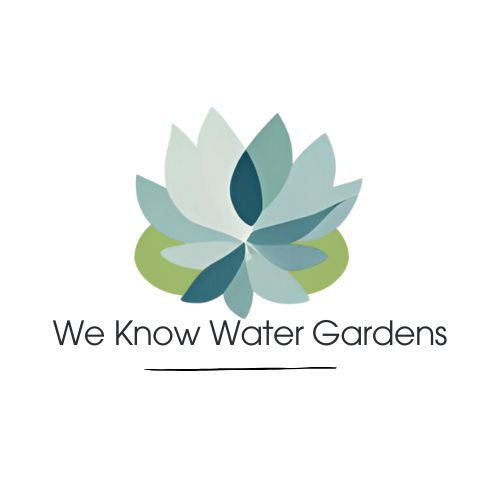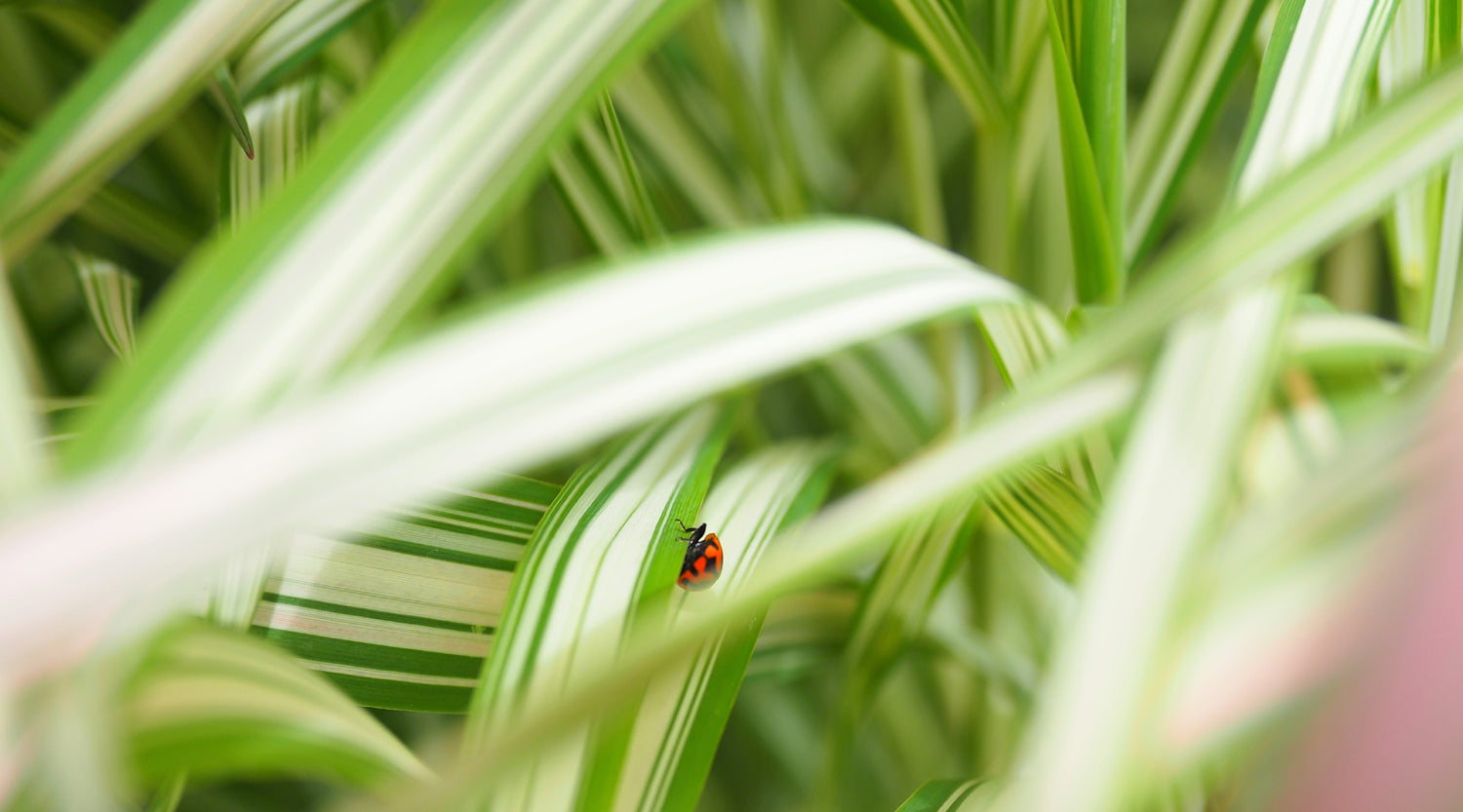The Ultimate Guide to Feeding and Nourishing Your Pond Plants
on Nov 15, 2024
Whether you have a garden pond teeming with water lilies or a backyard pond with floating plants, understanding how to properly feed pond plants here in Australia is crucial for their health and water quality.
In this guide, we will walk you through the essential steps and strategies to ensure your pond plants thrive. From understanding their nutritional requirements to choosing the right fertiliser that is fish safe. By providing your pond plants with the right balance of nutrients, you can promote vigorous growth, vibrant colours, and strong root systems. We will delve into the various types of pond plants and discuss their specific nutritional needs, so you can tailor your feeding routine accordingly.
The importance of feeding nourishing pond plants
Feeding pond plants is a crucial aspect of maintaining a vibrant and healthy aquatic ecosystem. Just like terrestrial plants, pond plants require essential nutrients to grow and flourish. These nutrients not only promote healthy growth but also contribute to the overall water quality and health of your pond. By ensuring that your pond plants receive proper nutrition, you can create a thriving habitat that supports aquatic life and enhances the visual allure of your garden.
Without adequate nourishment, pond plants can become weak and susceptible to diseases and pests. Nutrient deficiencies can lead to stunted growth, poor flowering, and even plant death. Moreover, healthy pond plants play a vital role in maintaining water quality by filtering pollutants and providing oxygen to the water. When these plants are well-fed, they can effectively perform their ecological functions, contributing to a balanced and thriving pond environment.
In addition to the aesthetic and ecological benefits, well-nourished pond plants can also prevent issues such as algae blooms. Overly nutrient-rich water can lead to excessive algae growth, which can suffocate aquatic plants and disrupt the entire pond ecosystem. By focusing on the nutritional needs of your pond plants, you can help maintain a harmonious balance within your pond, ensuring that both plant and animal life can thrive together.
Understanding the nutritional needs of pond plants
To effectively nourish your pond plants, it's essential to understand their specific nutritional needs. Pond plants generally require three primary macronutrients: nitrogen (N), phosphorus (P), and potassium (K). Each of these nutrients plays a unique role in plant growth. Nitrogen is vital for leaf development and overall growth, phosphorus supports root and flower development, and potassium helps regulate water uptake and disease resistance.
 In addition to these macronutrients, pond plants also require micronutrients such as iron, manganese, and magnesium, albeit in smaller quantities. These micronutrients are essential for various physiological functions, including chlorophyll production and enzyme activity. A deficiency in any of these nutrients can lead to visible symptoms in the plants, such as yellowing leaves or poor flowering.
In addition to these macronutrients, pond plants also require micronutrients such as iron, manganese, and magnesium, albeit in smaller quantities. These micronutrients are essential for various physiological functions, including chlorophyll production and enzyme activity. A deficiency in any of these nutrients can lead to visible symptoms in the plants, such as yellowing leaves or poor flowering.
Understanding the specific needs of your pond plants also involves recognising the differences between submerged, emergent, and floating plants. Submerged plants, for instance, often absorb nutrients directly from the water, while emergent plants rely on their roots to draw nutrients from the soil. Floating plants, on the other hand, may utilise nutrients from both the water and the air. Tailoring your feeding approach based on the type of plants you have will ensure they receive the appropriate nutrients for optimal growth.
Choosing the right fertiliser for pond plants
Selecting the right fertiliser for your pond plants is a critical step in promoting their health and vitality. Fertilisers come in various forms, including granular, liquid, and slow-release options. Each type has its own advantages and is suited for different feeding routines. Granular fertilisers are often easy to apply and can be placed directly in the soil around the base of the plants. Liquid fertilisers, on the other hand, are quickly absorbed and can be diluted in water for even distribution.
When choosing a fertiliser, it's essential to look for products specifically formulated for aquatic plants. These fertilisers usually have a balanced ratio of N-P-K and may also contain beneficial micronutrients. Some fertilisers are designed to dissolve slowly, providing a steady release of nutrients over time, which can be advantageous for maintaining consistent growth without the risk of nutrient burn.
We have a simplified process for feeding your pond plants and sell the best fertiliser tablets so that you don't have to give this too much consideration.
How to properly feed pond plants
Properly feeding your pond plants involves more than just choosing the right fertiliser; it also requires a thoughtful approach to application. Start by assessing the current health and growth of your plants, as this will inform your feeding schedule. Generally, spring is the best time to begin feeding, as it aligns with the growth spurts of most aquatic plants. Regularly monitor your plants throughout the growing season, adjusting your feeding routine as necessary based on their development.
Here's our feeing regime for pond plants in Australia.
- Use Pond Plantz Time Release fertilizer tablets
- Insert the tablet 5-10cm under the surface of the soil
- One tablet should be used in a 12cm pot and 1/2 a tablet in 7cm pots
- Larger pots can have multiple tablets added to them.
- For best results apply monthly between September and March.
 It’s crucial to avoid over-feed, as this can lead to nutrient imbalances and excessive algae growth.We recommend you always follow the directions to ensure your pond plants get exactly what they need. Observing changes in growth patterns, leaf colour, and flowering will guide you in determining whether your feeding regimen is effective or needs adjustment. Consistency and attentiveness are key to ensuring your pond plants receive the nourishment they need.
It’s crucial to avoid over-feed, as this can lead to nutrient imbalances and excessive algae growth.We recommend you always follow the directions to ensure your pond plants get exactly what they need. Observing changes in growth patterns, leaf colour, and flowering will guide you in determining whether your feeding regimen is effective or needs adjustment. Consistency and attentiveness are key to ensuring your pond plants receive the nourishment they need.
Common mistakes to avoid when feeding pond plants
Feeding pond plants can be a rewarding experience, but there are several common mistakes that gardeners often make. One of the most prevalent errors is over-feeding. This can lead to nutrient overload and negatively impact water quality as well as loss of fish. Excess nutrients can cause algae blooms, deplete oxygen levels, and ultimately harm both plants and aquatic life. It's essential to follow the recommended application rates and monitor the effects on your pond regularly.
Another mistake is using fertilisers not specifically designed for aquatic plants that is not safe for pond fish. Many garden fertilisers contain high levels of phosphorus, which can be detrimental in an aquatic environment. Choosing the wrong product can result in poor growth, leaf burn, and unwanted algae growth. Not only can common garden fertilisers kill your pond fish, they can be harmful to other aquatic populations such as frogs, tadpoles, pollinators and birds.
Best practices for maintaining healthy pond plants
To ensure your pond plants remain healthy and vibrant, there are several best practices to follow. First, regular maintenance is key. This includes monitoring water quality, checking for pests or diseases, and removing any dead or decaying plant material. A clean pond environment helps prevent the spread of diseases and promotes better growth among your aquatic plants.
Additionally, consider the placement of your pond plants. Ensure that they are positioned in areas where they can receive adequate sunlight, as most aquatic plants require a good amount of light for photosynthesis. However, be mindful of the balance between sunlight and shade, especially in smaller ponds, to prevent overheating and excessive algae growth. Rotating plants or adjusting their locations based on seasonal changes can help maintain the ideal growing conditions.
Lastly, incorporating a variety of plant species can enhance the resilience of your pond ecosystem. Diverse plant life can better withstand environmental changes and support various aquatic organisms. Aim to include a mix of submerged, emergent, and floating plants to create a balanced and dynamic aquatic environment. Regularly evaluate the health of each plant type and make adjustments as needed to promote overall biodiversity in your pond.
Troubleshooting common issues with pond plants
Despite your best efforts, you may encounter issues with your pond plants from time to time. One common problem is yellowing leaves, which can indicate nutrient deficiencies, particularly nitrogen or iron. If you notice this issue, consider testing the soil and water for nutrient levels and adjusting your feeding strategy accordingly.
Another issue to watch for is stunted growth, which may be caused by overcrowding or competition for resources. If your pond plants are tightly packed, consider thinning them out to give each plant more space to grow. This not only improves air circulation but also allows for better light penetration, supporting overall plant health. Additionally, ensure that your water quality is optimal, as poor water conditions can inhibit growth.
Pest infestations can also pose a threat to the health of your pond plants.
Common pests include aphids, snails, and various aquatic insects. Regularly inspect your plants for signs of damage or infestation, and take action promptly if you discover any issues. Natural remedies, such as introducing beneficial insects or using organic pest control methods, can effectively manage pest populations without harming your aquatic environment.
Additional tips for promoting growth and vitality in pond plants
In addition to proper feeding and maintenance, there are several other strategies you can employ to promote the growth and vitality of your pond plants. One effective method is to provide adequate aeration to the water. Introducing aeration devices, such as pond pumps or pond filters, can enhance oxygen levels in the water, promoting healthier root systems and overall plant growth.
Consider integrating companion planting techniques by pairing different plant species that complement each other. Some plants can provide shade for others, while some may help deter pests. This synergistic approach can lead to a more resilient and thriving pond ecosystem. Researching compatible plant combinations can help you create a harmonious plant community that benefits all involved.
Lastly, seasonal care is essential for sustaining the health of your pond plants. As temperatures fluctuate with the changing seasons, adjust your feeding and maintenance routines accordingly. In colder regions of Australia, many pond plants enter dormancy, requiring no food at all. Conversely, during the growing season, you may need to increase your care efforts to support robust growth. Paying attention to these seasonal changes will help you adapt your practices and ensure long-term success for your pond plants.
Feeding your pond plants is a fundamental aspect of creating a beautiful and thriving aquatic environment. By understanding their nutritional needs, using the correct fertiliser, and practicing proper feeding techniques, you can promote healthy growth and vibrant colours in your pond plants. Avoiding common mistakes and following best practices will further enhance your efforts, leading to a lush and dynamic ecosystem.
Regular monitoring and maintenance are key to addressing any issues that may arise, while additional tips for promoting growth can help you achieve the stunning pond garden you envision. Remember that healthy plants means that your water quality will improve too as your plants will be better equiped to filter and oxygenate the water.
© weknowwatergardens 2024
Share


